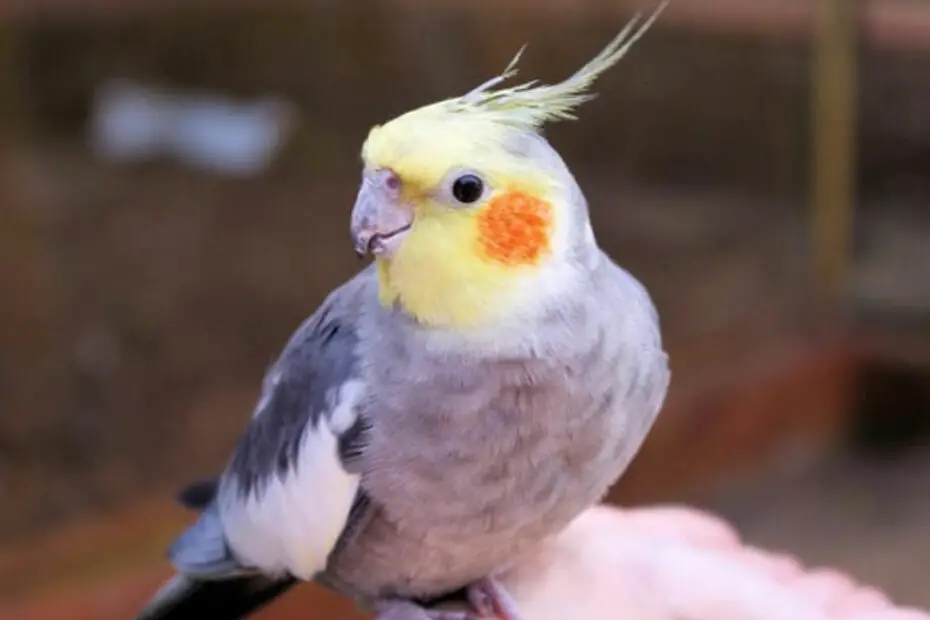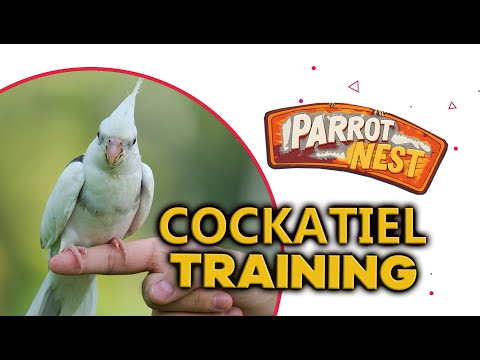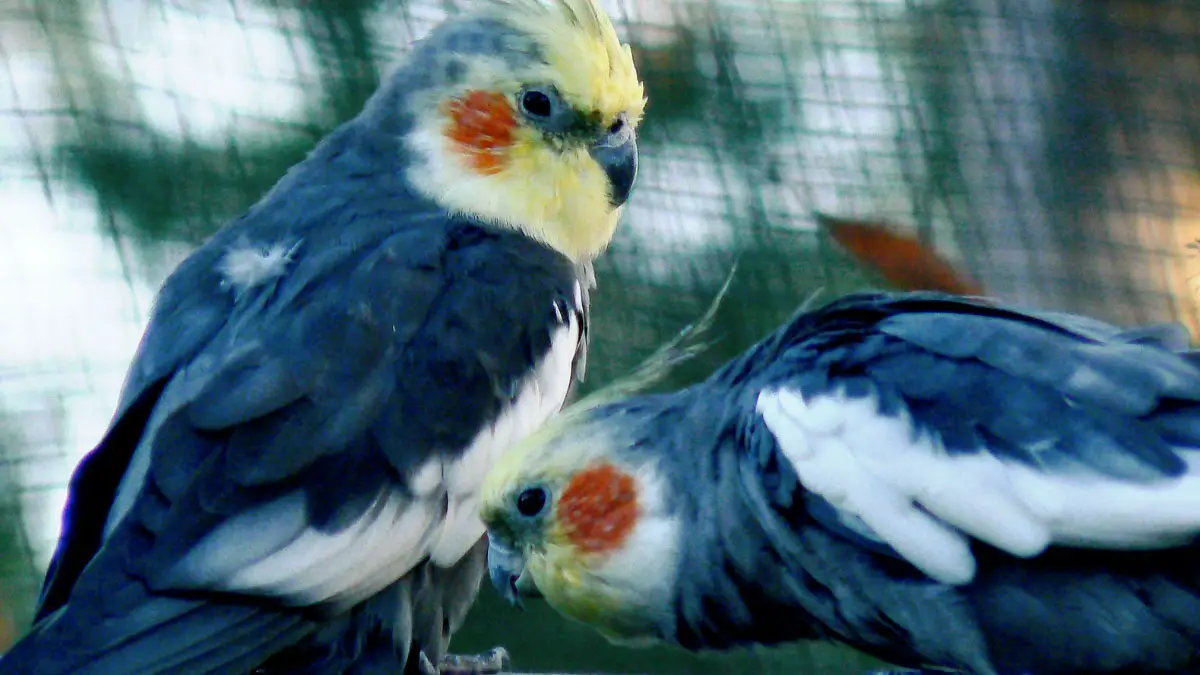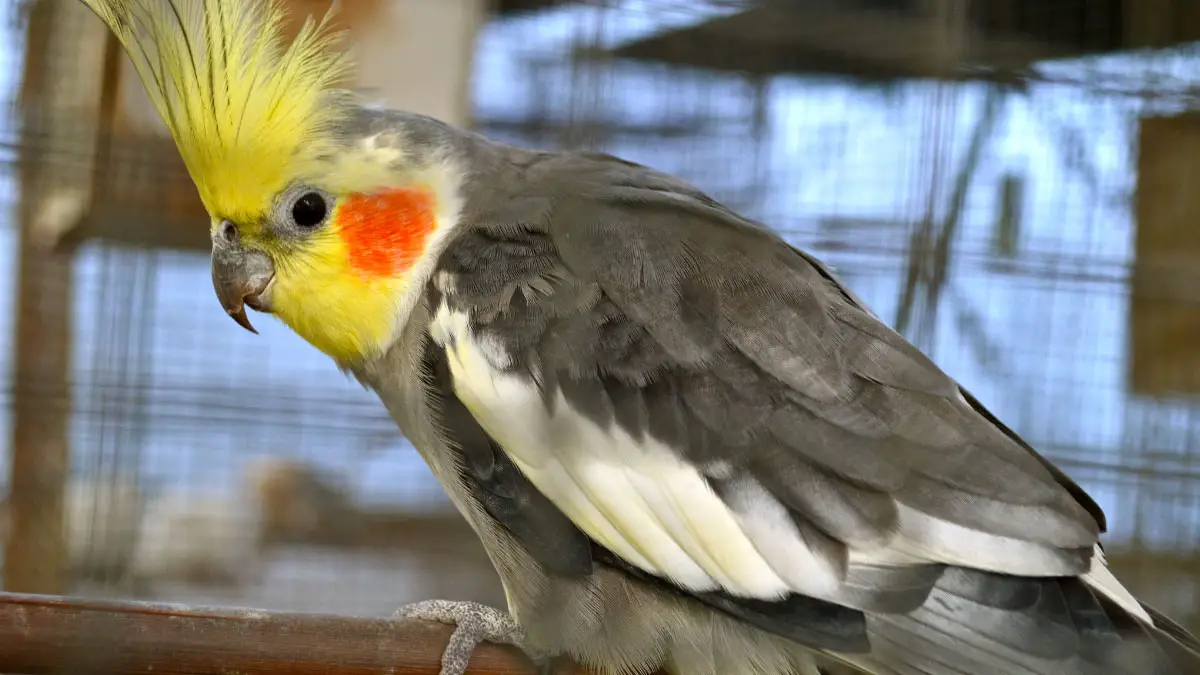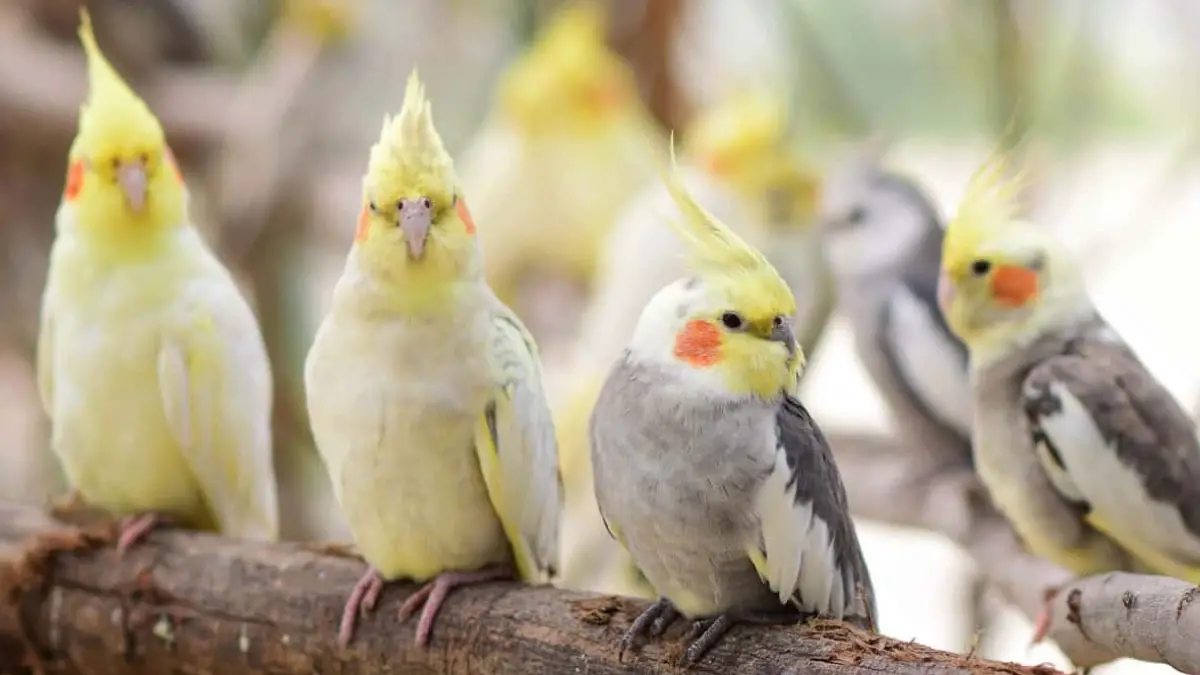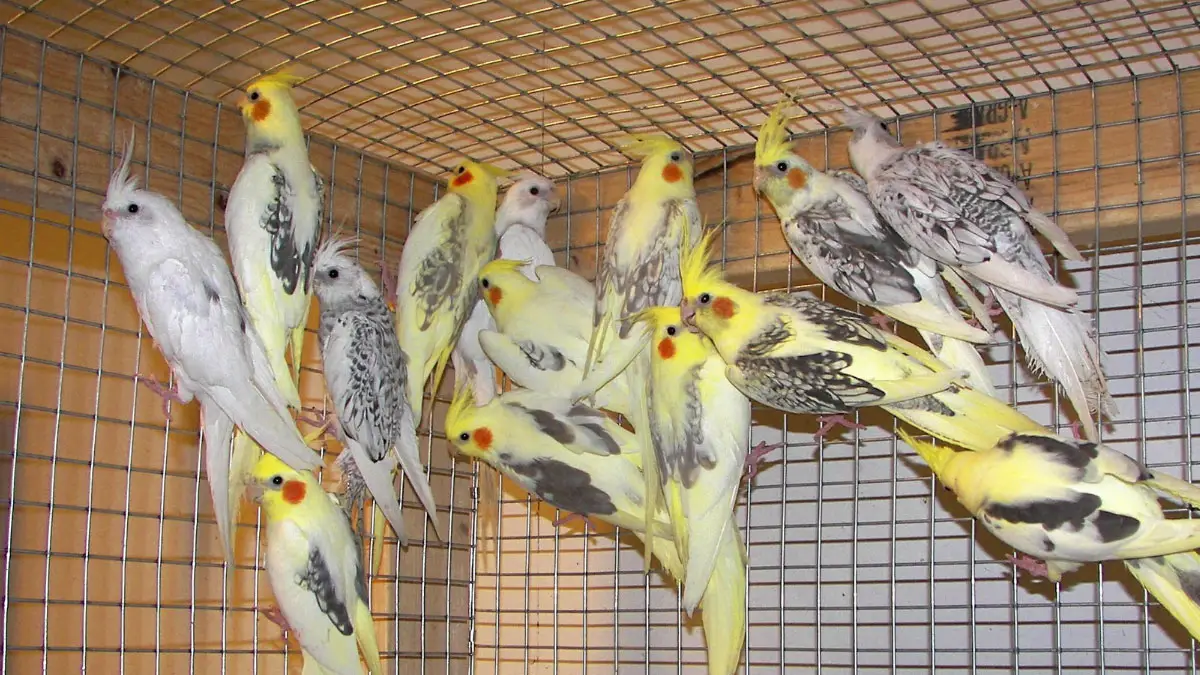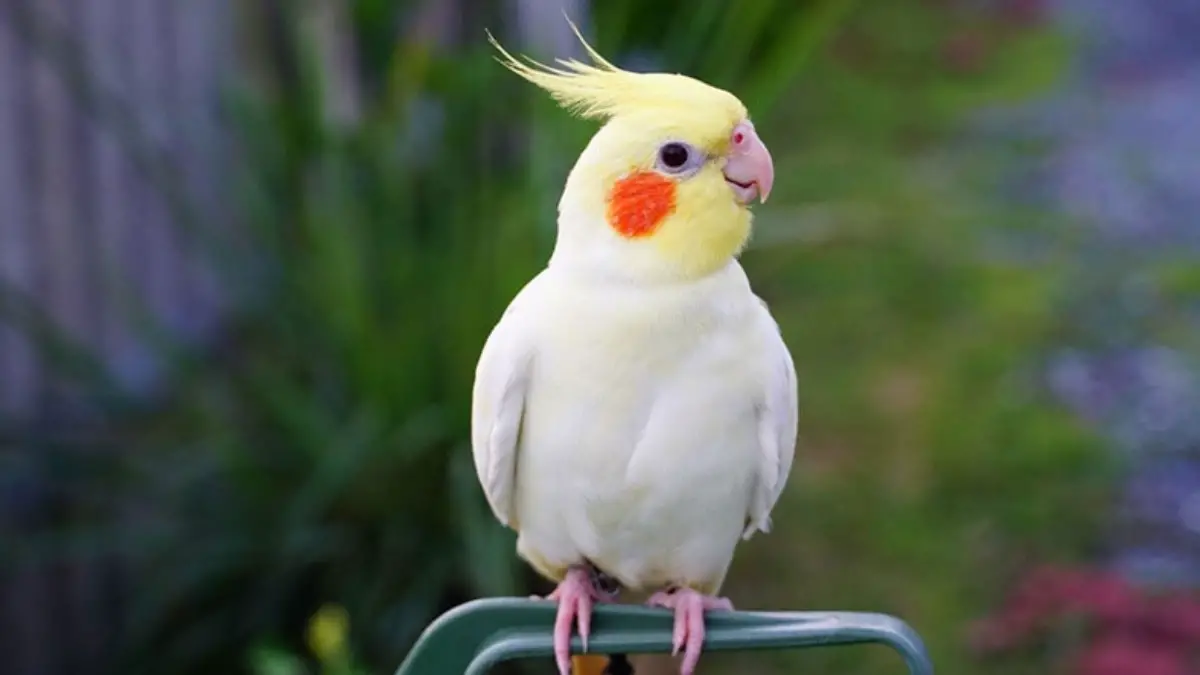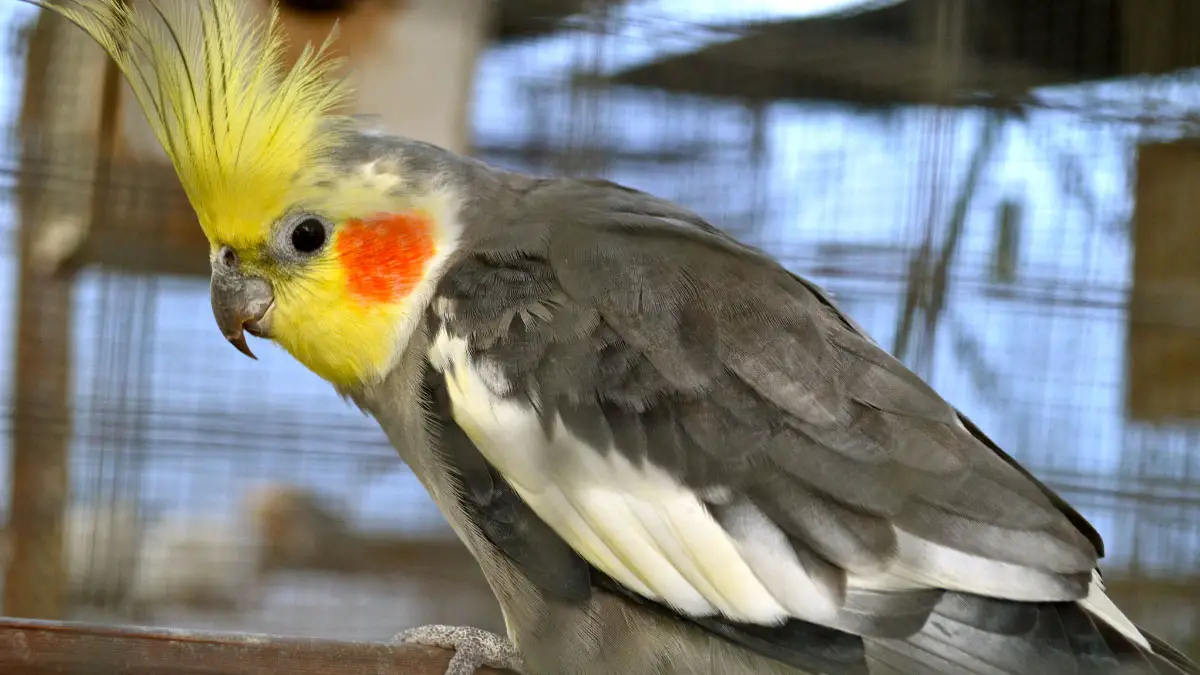A major problem with keeping birds in captivity is being unable to help them have ample exercise. Without enough physical movement and stimulation, the birds get weak and bored and start showing a variety of problems.
So, how to keep your pet cockatiel active and healthy? Providing your cockatiel with toys and increasing its activity through more interaction can help it become active. Moreover, physical movements increase the bird’s overall health and well-being in captivity. Exercise also strengthens the bones and develops the immune system, improving its physical and mental well-being.
In this guide, we’re going to learn about various tips and tricks to keep a pet cockatiel healthy.
Providing Exercise for Cockatiels
In the world of exotic parrots, there are more than a dozen kinds of cockatiel species and breeds available. Gray and Lutino mutations are quite popular and readily available in pet shops. Some rare mutations are hard to find, such as the Platinum cockatiel or the Blue cockatiel. No matter the mutation a bird has, its health and activity requirements will always be the same as other cockatiels.
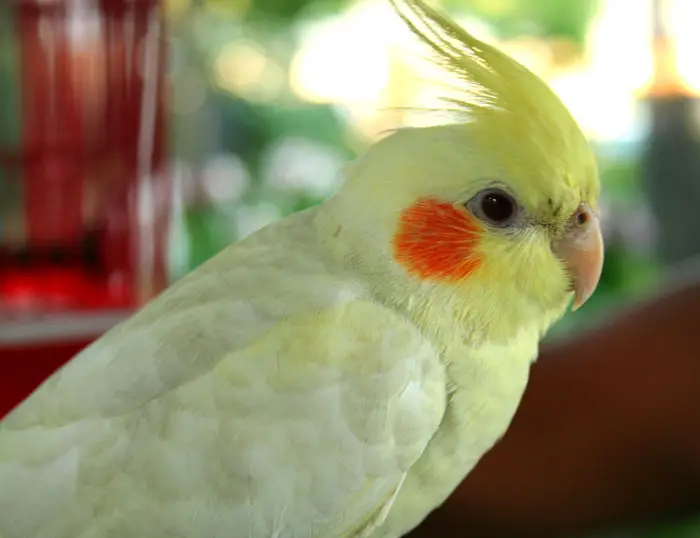
In the wild, cockatiels, along with other parrots, get a good amount of flight time, learn about survival tricks and get to forage for food a lot. But in captivity, they get hardly a fraction of the level of activity they’d get in the wild. Hence, the immunity and physical well-being of captive birds and wild birds are different.
In that sense, exercising is vital to a cockatiel’s health and there are nice ways to engage captive birds with exercise. We’ll talk about that now.
Providing Appropriate Exercise and Activity for Cockatiels
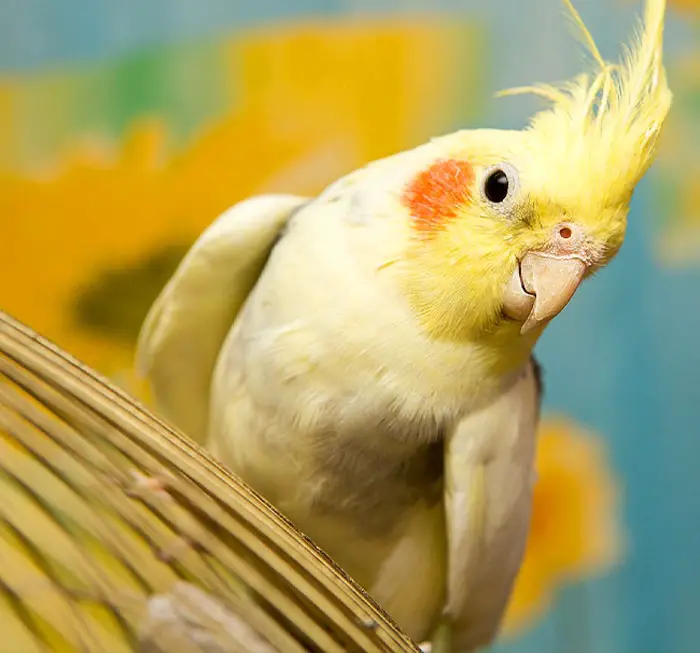
Providing activity for pet birds is actually easy in captivity. Let’s talk about a few bird exercise ideas now.
Flight Training
A bird uses most of its muscle mass while flying. Captive-bred birds may not get used to flights if they’re always kept in cages. Thus, avoiding flight will result in a bird’s wing muscle atrophy, or muscle loss.
You can easily teach your cockatiel to fly a short distance from a place to your hand in the beginning and slowly increase the distance. With time, it’ll get used to flying for long distances in your house.
Toys
Get your bird a toy ball and let your cockatiel play with it. Cockatiels like to spend time with round toys. Moreover, round toys are safer than toys with sharp corners. While you can use basically any bird toys for cockatiels, a proper toy selection is vital for their optimal mental and physical health. A good set of bird toys and accessories helps the bird develop its foraging and balancing/movement skills.
How to Select and Introduce Toys and Other Accessories to Support Birds’ Activity?
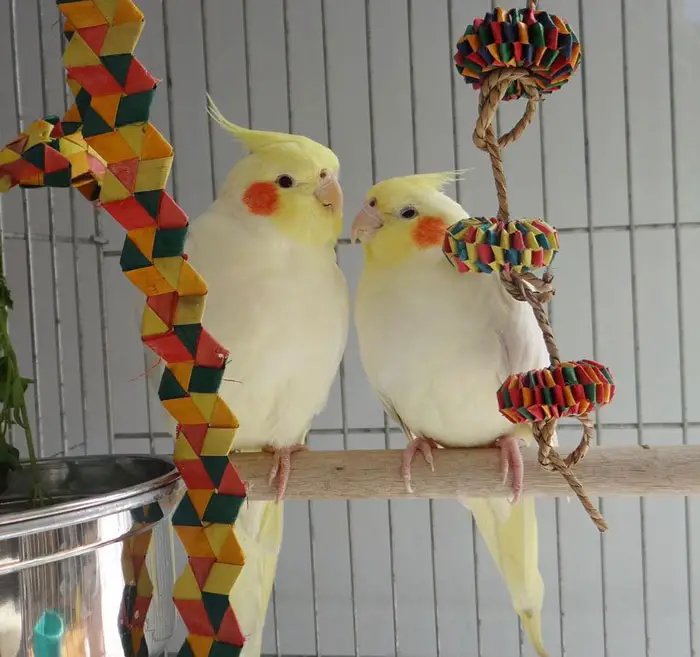
You’ll get all the bird accessories and toys you’ll need for your pet care in your local pet shops. But you can make some DIY toys at home as well. For example, ice cream sticks, papers, balls, and old sewing spools are some of the best exercise toys for cockatiels. Let’s talk about some common toys for them:
- Chew Toys: softwood or plastic chewing toys are good for their beaks. Biting keeps the beaks strong and in the correct shape.
- Edible Toys: place a calcium block or a cuttlefish bone in the cockatiel’s cage. It’ll play with it and eat bits of it. These things work as both toys and nutrition supplies at the same time.
- Swings: swinging keeps birds’ feet strong. You can get a mid-sized parrot swing for a cockatiel.
- Mirror: mirrors aren’t necessarily toys but birds like to see themselves through a mirror and preen (groom) themselves. Doing this helps keep them clean.
How to Encourage Healthy Foraging Behavior?
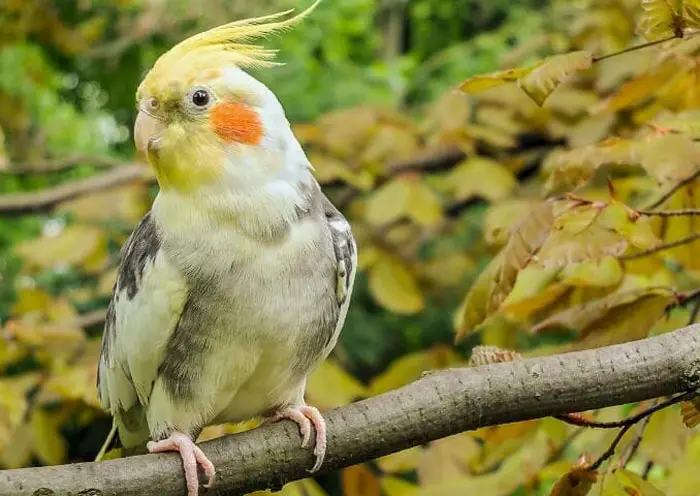
Parrots spend 4 to 6 hours in nature foraging. In captivity, it’s easy to recreate it. Instead of giving cut fruit or veggie pieces to your cockatiel, give it treats inside toys or puzzles. It’ll spend time thinking about how to access those treats and have an activity similar to foraging.
Also, you could give the bird uncut fruits or veggies so that it’ll spend the food cutting and chunking it. Doing so will encourage the cockatiels to acquire natural foraging tendencies.
Managing Exercise Levels for Different Life Stages
Like all other parrots, a cockatiel’s playfulness will lessen with its age. It’ll become calm and spend less time with toys once it reaches its maturity within 12 months. So, try to have your pet cockatiel get the most active time in its first year of life.
Afterward, it’ll spend time with toys but not more than an hour or so. Also, as a bird gets older, it’ll spend more time with its human owner. Its cuddling will increase and training various tricks will get easier as it matures.
Environmental Enrichment for Cockatiels
Cockatiels are one of the smartest parrots in bird psychology studies. They require constant attention and stimulation. Therefore, providing a bird with environmental enrichment is important for their mental well-being.
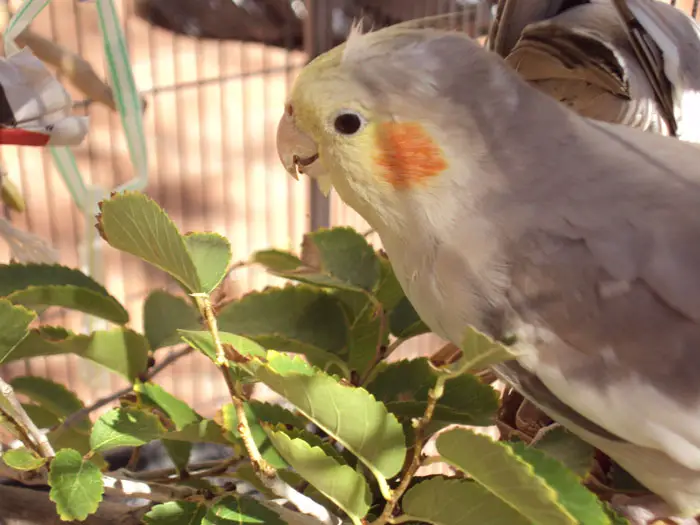
You can give your cockatiel some toys that can hide treats inside or some puzzle-like toys. These toys will help the bird develop good memories, increase its problem-solving abilities and promote its natural foraging behavior. Foraging is a bird behavior of finding insects and foods from nature, and it is achieved naturally by all birds. Giving a bird environmental enrichment is not only important but also provides it with enough stimulation to increase its activity level.
Choosing Appropriate Perches, Cages for Cockatiel
A cockatiel cage should at least be 24” long, 18” deep and 24” high. The height is necessary for the bird’s flight practice. You can pick a larger cage, which is, in fact, recommended.
Pick a good, stable perch made of softwood. However, the perch shouldn’t be smooth or hard because it’ll be problematic for the cockatiel to sit on it for long periods. In that sense, a natural branch would be best since it’ll mimic the unevenness of a branch for a wild cockatiel. But it should be about .5 to 1 inch in diameter.
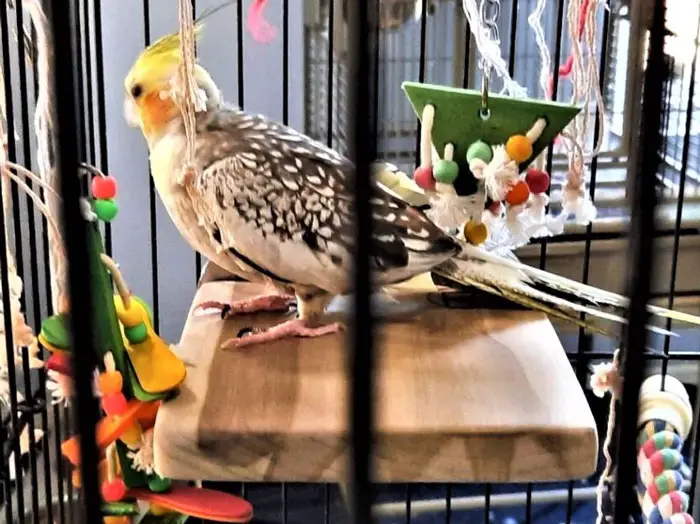
Accordingly, you should keep two perches, one on top of the other. This’ll help the bird fly from one perch to another, and it’ll be a nice exercise.
Encouraging Healthy Socialization
If your bird has no other bird companion, you should try to spend at least 3 to 4 hours of time with it. Cockatiels are smart and require a lot of attention.
Try to play games with your feather friend, teach it some tricks and take it outdoors to meet new people (while keeping it chained). Doing these habituation techniques will surely encourage friendliness towards other humans and animals. It will also develop healthy habits for cockatiels.
Watch this video to learn some basics on how to train cockatiel
Maintaining Bird Health through Exercise
Similar to humans, exercise plays a crucial role in a parrot’s well-being. Regular exercise can develop bird health and hugely reduce health risks such as obesity, cholesterol and other hormone-related problems in a cockatiel.
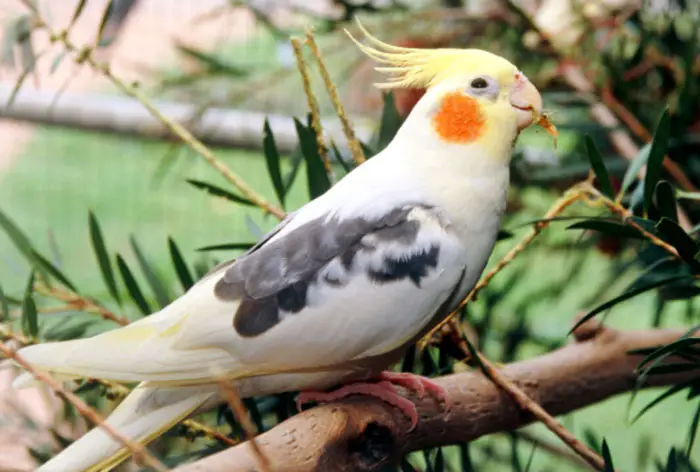
How Exercise Supports a Cockatiel’s Health?
Let’s see how exercise can support overall bird health management and well-being for your feathered friend.
- Decrease Cholesterol Level
A healthy cockatiel should have below 200 cholesterol levels in its blood. If that number gets higher, the bird is at risk of heart disease. More cholesterol increases the density of the blood, making it harder to move around the body. Moreover, the heart has to pump harder to move that blood, which puts a toll on the heart.
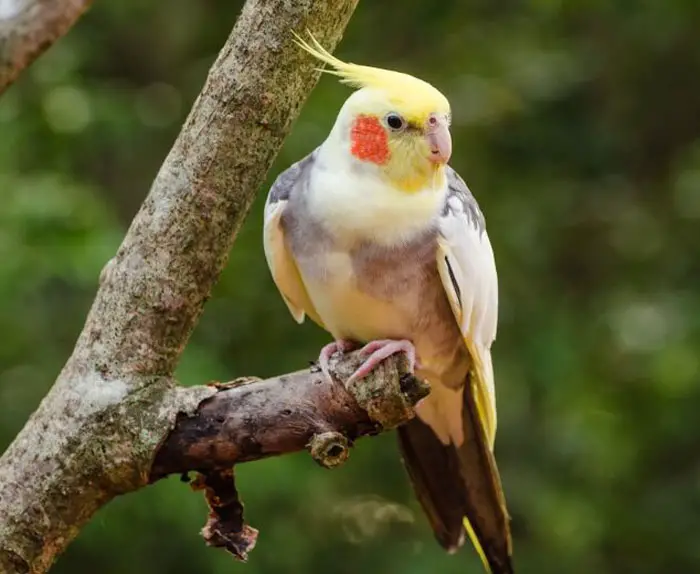
Regular exercise along with a proper diet can help a cockatiel maintain its proper cholesterol balance. In turn, this will increase the bird’s lifespan too, improve its energy levels, and ensure proper bird nutrition. Thus, a decrease in cholesterol will directly improve the bird’s immune function radically.
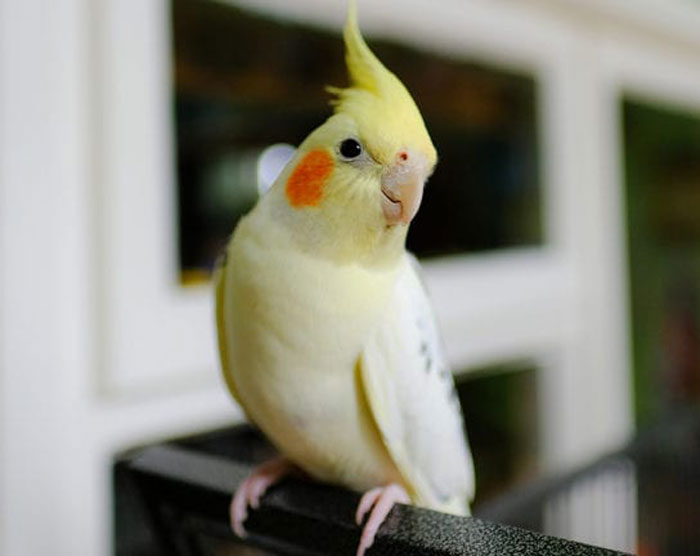
- Reduce Fat, Increase Muscle and Bone Mass
Inactivity increases body fat while reducing muscle mass and on the other hand, regular exercise does just the opposite. Doing basic exercises can keep a cockatiel’s fat levels, increase muscle mass, and decrease fat-related hormonal secretions.
Another benefit of fat loss is the increase of endorphins in the blood that keep a cockatiel’s mental health better. Endorphin is a hormone that keeps an animal feeling good by converting it into signals sent to the brain.
And finally, while working out, a bird’s bones create tiny cracks from the body movements. These cracks create spaces inside them, which get filled with newer bones with time. This process increases the density of the bones, making them stronger and less prone to breakage.
Identify and Address Common Exercise-related Health Issues in Cockatiels
Let’s talk about 2 common exercises related to health issues in cockatiels and see how to resolve them.
1. Obesity
A healthy cockatiel should weigh between 90-110 grams. If the bird’s weight is more than this range, it’s a sign of fat accumulation. Regular exercise and a proper, controlled diet will help the cockatiel stay within the safe weight range.
2. Feather/Wing Damage
A hormonally imbalanced or depressed bird can pluck its feathers or hit on the cage with its wings.
Likewise, it’s essential at this stage to figure out what’s causing the bird to become stressed in the first place. If it’s improper exercise, make some arrangements to ensure that and take action accordingly.
Monitoring Your Bird’s Exercise Levels and Making Adjustments
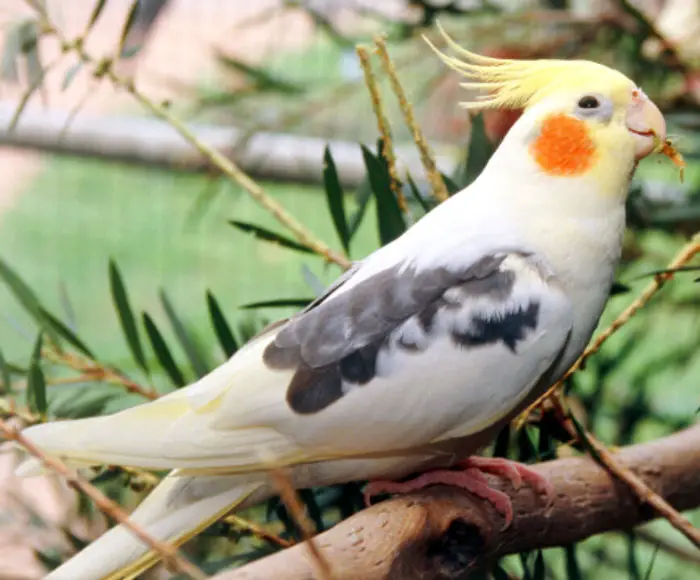
You should stay beside your cockatiel when it’s time for exercise. It should have about 2 hours of exercise time on average. Here are a few ways of doing so:
- Have the bird in a large cage. It’ll allow the cockatiel to fly and flap its wings easily
- Place some toys inside the cage. Cockatiels love to play with them
- Put a swing in the cage. Most parrots adore the movement of a swing and it helps strengthen their feet bones
- Take the bird for a walk inside your home. Walking develops a bird’s bone density and improves leg balance
FAQs
Let’s talk about a few commonly asked questions about cockatiel exercise.
Yes. Cockatiels can easily be trained to fly on command. However, make sure they feel comfortable sitting on your hand before starting the training. This will make them comfortable and offer a sense of security.
Giving cockatiels at least 2 hours of exercise every day is a good idea. Flying, wing beating, walking around the house, and playing with toys are examples of exercises for them.
A few common mistakes are:
- Giving the bird fewer toys
- Keeping them in smaller cages than they require
- Giving them a smooth, unstable perch
- Skipping basic obedience training
Yes. Over exercising can break a cockatiel’s bones, strain its muscles or cause tendon damage. Hence, balanced exercise routines for pet birds are vital for cockatiels as well as other feathered friends.
There are a few ways of doing so. Following are some examples:
- Giving cockatiels toys inside the cage
- Letting them forage their foods
- Placing soft wood pieces and branches to induce the birds to chew
Conclusion
So we’ve learned about some cockatiel exercise tips and types and how you can keep your bird stimulated and help it maintain its health. We’ve also talked about how exercise can help a bird’s overall well-being and help it live up to its full potential.
Hopefully, now you understand the benefits exercise can have on a cockatiel. Without a proper exercise routine and environmental enrichment, it’s not practically possible to have a bird in its best shape. Moreover, the better care and activity your pet cockatiel will get, the better it can be as your feathered companion.
If you want to learn about this bird more in-depth, there are good books you can pick. Since cockatiels are one of the most favorite parrot breeds, there are enough high-quality books and videos about it.
